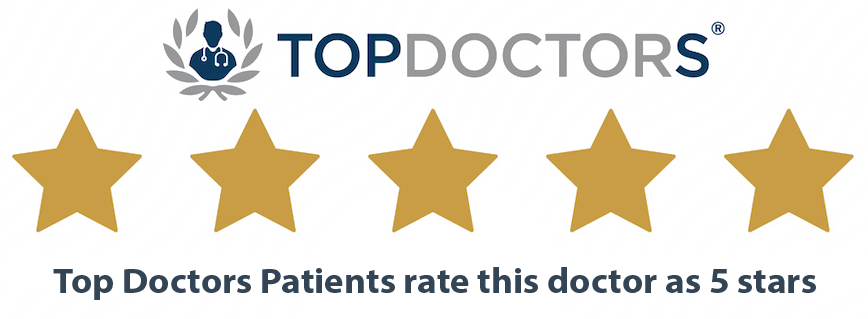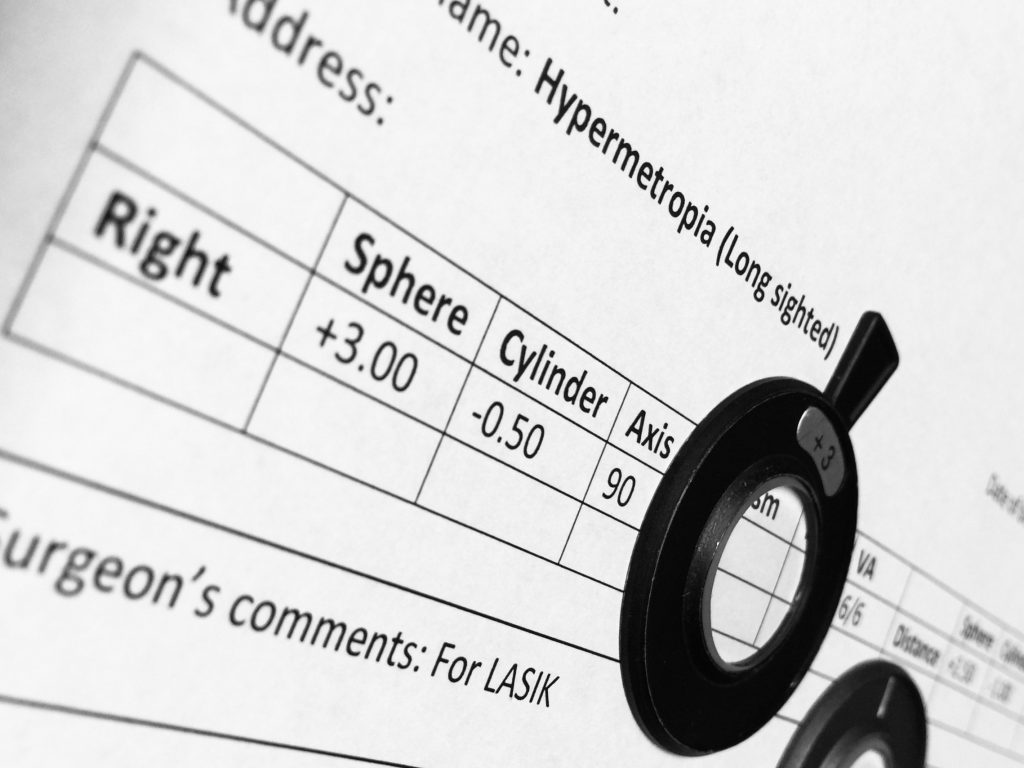What is long-sightedness or hypermetropia?
Long-sightedness, or hyperopia as it is known medically, is a refractive error of the eye that can easily be compensated for or corrected. It usually occurs when the eyeball is shorter than required for the curvature (refractive power) of the cornea or more generally when there is a mismatch between the refractive power and the length of your eye. The result is light rays coming to focus in front of the retina; for crisp normal vision the light rays need to focus on the retina.
Hyperopia is naturally present at birth and the early years of life; over the first 5 to 6 years the degree of long-sightedness decreases through a process known as emmetropisation. However, a significant proportion of the population will remain hyperopic in adulthood.
What symptoms does long-sightedness (hyperopia) cause?
- In low degrees of hyperopia the near vision is blurred and the distance vision remains clear.
- In moderate degrees of hyperopia the near vision is blurred and the distance vision less clear.
- In higher degrees, or in the fourth and fifth decades of life when the natural lens of the eye loses its ability to accommodate, the vision becomes blurred for near, intermediate and distance.
- Headache after prolonged activities that require visual attention; this is often caused by partially closing the eyelids and prolonged effort (accommodation) of your lens.
Why does hyperopia develop?
Similar to other refractive errors, the cause of long-sightedness is not fully understood. Overall, it represents a failure of emmetropisation, the biological process that matches the length of the eye to its refractive power. Genetic factors are considered to play an important role, as the condition can run in families. Rural living and prolonged outdoor activities have also been implicated in studies.
How can long-sightedness (hyperopia) be diagnosed?
Long-sightedness and other refractive errors can be diagnosed by your optometrist (optician) or eye doctor. The examination involves a refraction in order to assess the refractive status of the eye. Other conditions of the eye that may co-exist, such as narrow-angle glaucoma, squint or lazy eye, can also be detected.
How can long-sightedness (hyperopia) be treated?
Options for long-sightedness include glasses, contact lenses and refractive eye surgery:
- Spectacles are by far the most common modality for the compensation of long-sightedness. They are readily available and cheap. However, they are associated with distortion of your peripheral vision, especially for moderate and high prescriptions, and inconveniences, such as getting wet in the rain, fogging and inability to wear designer sunglasses.
- Contact lenses are also commonly used for long-sightedness. They are a good option as they do overcome the above limitations of spectacles. They do have their own limitations though; they do reduce oxygen delivery to the eye, they can cause dry eye and with prolonged use can lead to contact lens intolerance and sight-threatening infection.
- A more permanent solution to hyperopia can be provided by refractive surgery. Depending on your prescription, eye measurements and visual needs, a variety of procedures are available. These include LASIK, LASEK/Advanced Surface Ablation, PRESBYOND laser blended vision, Implantable Collamer Lens (ICL) surgery and refractive lens exchange.
- Laser eye surgery provides a permanent treatment by altering the shape and refractive power of the cornea so that light rays come to focus on the retina of the eye. We offer a variety of laser procedures, allowing us to recommend the best treatment for your eyes and needs; this includes LASIK, LASEK/Advanced Surface Ablation and PRESBYOND laser blended vision.
- An Implantable Collamer Lens (ICL) is like a permanent plastic contact lens that is implanted inside your eye, in front of your natural lens. No one can see this phakic lens and you cannot feel its presence in your eye. It is a safe alternative to laser surgery and it is usually reserved for higher prescriptions or abnormal corneas when laser surgery may not be the best option.
- Refractive lens exchange, also known as lens replacement, also provides a permanent solution; your natural lens is replaced with an artificial intraocular lens, very similar to modern cataract surgery. This treatment option is most appropriate if you are over the age of 55 years, needing reading glasses or your prescription is higher than the normal range for laser vision correction.
How can I find out more?
To learn more about LASIK, ReLEx SMILE, PRESBYOND laser blended vision, refractive lens exchange, visit the respective pages of our website. Or explore further which option is better for you by booking a free no-obligation screening appointment through our contact page. Alternatively, call 02381 812281.
All the best,
Aris



